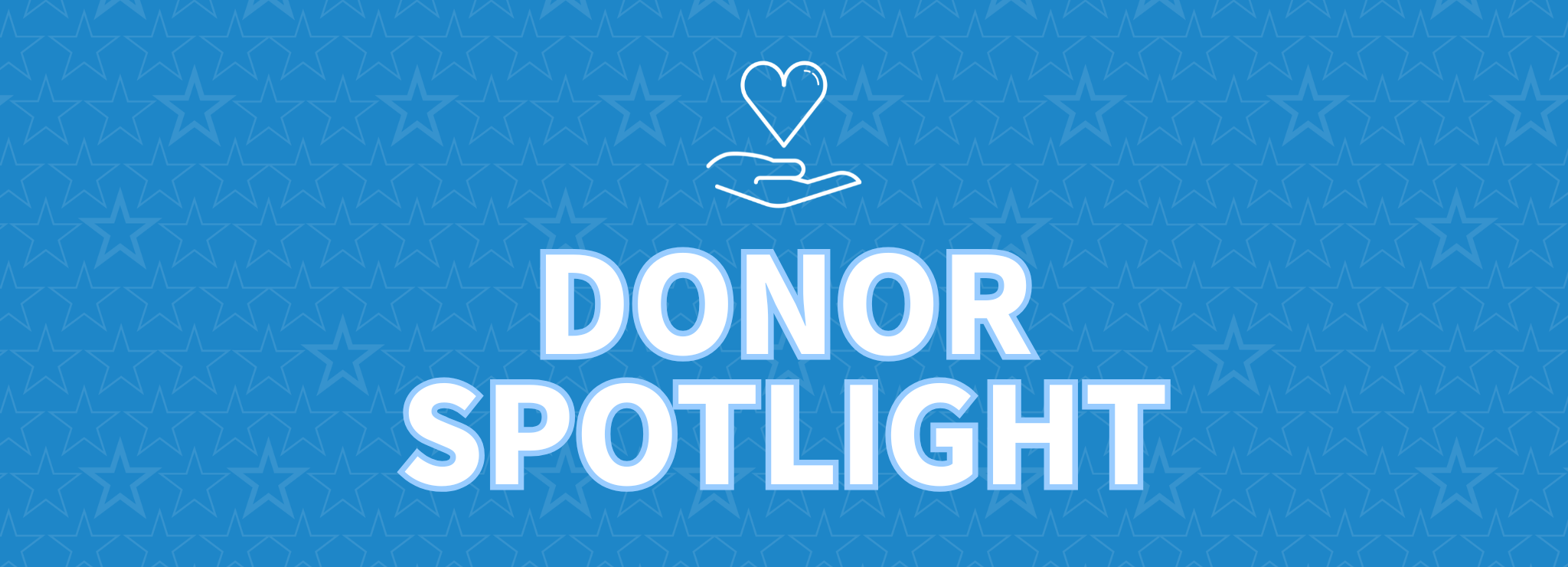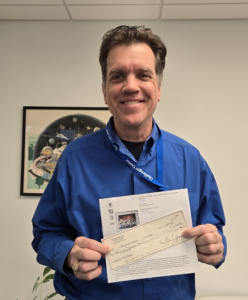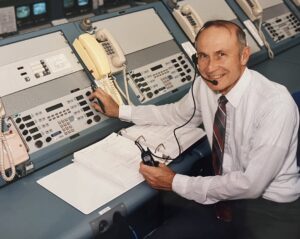
 Earlier this year, I came into my office and found an unexpected donation of $6,000 on my desk, along with a note from Bob Sieck. I was amazed, but I recognized the name instantly from my years at Johnson Space Center. Bob was a NASA Launch Director at the Kennedy Space Center, where he spent over three decades ensuring astronauts safely left Earth on their journey into space. I was curious about the backstory of this donation and how it arrived on my desk, so I reached out to Bob. While we only spoke for half an hour, the conversation made a deeper impression. While Bob is too humble to call himself a legend, talking with him, I was reminded of what it truly means to serve a mission greater than ourselves.
Earlier this year, I came into my office and found an unexpected donation of $6,000 on my desk, along with a note from Bob Sieck. I was amazed, but I recognized the name instantly from my years at Johnson Space Center. Bob was a NASA Launch Director at the Kennedy Space Center, where he spent over three decades ensuring astronauts safely left Earth on their journey into space. I was curious about the backstory of this donation and how it arrived on my desk, so I reached out to Bob. While we only spoke for half an hour, the conversation made a deeper impression. While Bob is too humble to call himself a legend, talking with him, I was reminded of what it truly means to serve a mission greater than ourselves.
Starting as a Gemini Spacecraft systems engineer in 1964, Bob was right in the thick of the Space Race. By the time he retired in 1999, he had served as Launch Director for 52 Space Shuttle launches. “I was fortunate to be a part of a great adventure,” he said fondly. But his commitment to exploration and education didn’t end with his NASA career.
 Bob had spent years collecting memorabilia: signed astronaut lithographs, artifacts from missions he worked on, pieces of history that tell the story of spaceflight. These weren’t just souvenirs to him; they represented the people he worked alongside, the astronauts whose lives depended on his team’s work, and the spirit of collaboration that defines space exploration.
Bob had spent years collecting memorabilia: signed astronaut lithographs, artifacts from missions he worked on, pieces of history that tell the story of spaceflight. These weren’t just souvenirs to him; they represented the people he worked alongside, the astronauts whose lives depended on his team’s work, and the spirit of collaboration that defines space exploration.
So when the time came to part with some of his collection, Bob saw a way to give back. He put the items up for auction and ensured that every dollar went to Challenger Center, dedicating the funds to inspiring the next generation through hands-on space education.
“Instead of leaving it on a shelf, let’s put it to use!” Bob told me. “I wanted to make sure the proceeds went to Challenger Center.”
A profound belief influences Bob’s action: We’re all on the same mission. It’s not just astronauts who make spaceflight possible. Engineers, technicians, educators—each of us plays a role. “The astronauts are part of the mission, but they’re just as much a part of the team as an engineer like I was or someone who builds a rocket,” he said. “That’s something I would hear from the astronauts, too: ‘Without your work on the team, we don’t get to go into space. We’re on the same mission.’”
That idea of a shared mission deeply resonates with me. Before joining Challenger Center, I spent 37 years at NASA, including helping to lead STEM engagement efforts to bring students into the world of space and exploration. I’ve always believed that inspiring the young minds that will become the next generation of astronauts and Launch Directors is also part of that grander mission. Bob’s generosity ensures that more students will experience that spark of inspiration at Challenger Center, igniting their own dreams of space.
Challenger Center was founded in the wake of tragedy, but its purpose is rooted in hope—hope for the future, for innovation, for discovery. Bob’s donation is more than a financial contribution; it’s a reminder that we each have something to give, something that can shape the next generation.
I ask those reading this: How will you contribute to this shared mission? Whether through a donation, volunteering, or simply sharing the story of Challenger Center, every action helps keep the dream of exploration alive.
Thank you, Bob, for your dedication—not just to spaceflight, but to the future of those who will one day follow in the footsteps of the astronauts you helped launch. We’re all on this mission together.
